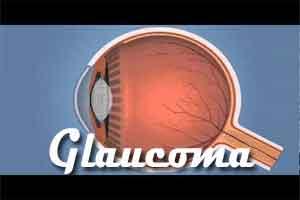- Home
- Editorial
- News
- Practice Guidelines
- Anesthesiology Guidelines
- Cancer Guidelines
- Cardiac Sciences Guidelines
- Critical Care Guidelines
- Dentistry Guidelines
- Dermatology Guidelines
- Diabetes and Endo Guidelines
- Diagnostics Guidelines
- ENT Guidelines
- Featured Practice Guidelines
- Gastroenterology Guidelines
- Geriatrics Guidelines
- Medicine Guidelines
- Nephrology Guidelines
- Neurosciences Guidelines
- Obs and Gynae Guidelines
- Ophthalmology Guidelines
- Orthopaedics Guidelines
- Paediatrics Guidelines
- Psychiatry Guidelines
- Pulmonology Guidelines
- Radiology Guidelines
- Surgery Guidelines
- Urology Guidelines
OCT measurement of inner macular thickness better tool for glaucoma detection: JAMA

Optical coherence tomography (OCT) measurement of inner macular thickness has a higher diagnostic performance for glaucoma detection and a stronger structure-function association than the currently used OCT-A (OCT-Angiography) measurement of inner macular vessel density, according to a new study.
Findings of the study, published in the journal JAMA Ophthalmology may suggest that OCT-A of the macula has a limited role in the diagnostic evaluation of glaucoma.
Kelvin H. Wan, Department of Ophthalmology and Visual Sciences, The Chinese University of Hong Kong, Hong Kong, China, and colleagues conducted the study to compare, the diagnostic performance for detection of glaucoma and the structure-function association between inner macular vessel density and inner macular thickness.
The study determines whether optical coherence tomography angiography (OCT-A) outperforms OCT to detect the eye condition.
Read Also: NICE updated guideline on glaucoma diagnosis and management
This cross-sectional study included 115 patients with glaucoma and 35 healthy individuals for measurements of retinal thickness and retinal vessel density, segmented between the anterior boundary of internal limiting membrane and the posterior boundary of the inner plexiform layer, over the 3 × 3-mm2 macula using swept-source OCT. All participants were Chinese. Visual sensitivity corresponding to the 3 × 3-mm2 macular region was expressed in unlogged 1/lambert for investigation of the structure-function associations. Diagnostic performance was evaluated with area under the receiver operating characteristic curves (AUCs). The study was conducted between January 12, 2016, and December 12, 2016.
Of the 115 patients with glaucoma, 42 (36.5%) were women (mean [SD] age, 53.5 [13.4] years); of the 35 individuals with healthy eyes, 25 (71.4%) were women (age, 60.6 [5.9] years).
Key Findings:
- Inner macular vessel density and thickness were 4.3% (95% CI, 2.4%-6.1%) and 21.1 μm (95% CI, 17.4-24.9 μm) smaller, respectively, in eyes with glaucoma compared with healthy eyes.
- The AUC of mean inner macular thickness for glaucoma detection was greater than that of mean inner macular vessel density (difference, 0.17; 95% CI, 0.01-0.31).
- At 90% specificity, the sensitivity of mean inner macular thicknesses for detection of glaucoma was greater than that of mean inner macular vessel densities (difference, 29.2%; 95% CI, 11.5%-64.6%).
- The strength of the structure-function association was stronger for mean inner macular thickness than mean inner macular vessel density in the linear (difference in R2 = 0.38; 95% CI, 0.22-0.54) and nonlinear (difference in R2 = 0.36; 95% CI, 0.21-0.51) regression models.
"OCT measurement of inner macular thickness shows a higher diagnostic performance to detect glaucoma and a stronger structure-function association than the currently used OCT-A measurement of inner macular vessel density. These findings may suggest that OCT-A of the macula has a limited role in the diagnostic evaluation of glaucoma," concluded the authors.
For further reference log on to 10.1001/jamaophthalmol.2018.1627

Disclaimer: This site is primarily intended for healthcare professionals. Any content/information on this website does not replace the advice of medical and/or health professionals and should not be construed as medical/diagnostic advice/endorsement or prescription. Use of this site is subject to our terms of use, privacy policy, advertisement policy. © 2020 Minerva Medical Treatment Pvt Ltd